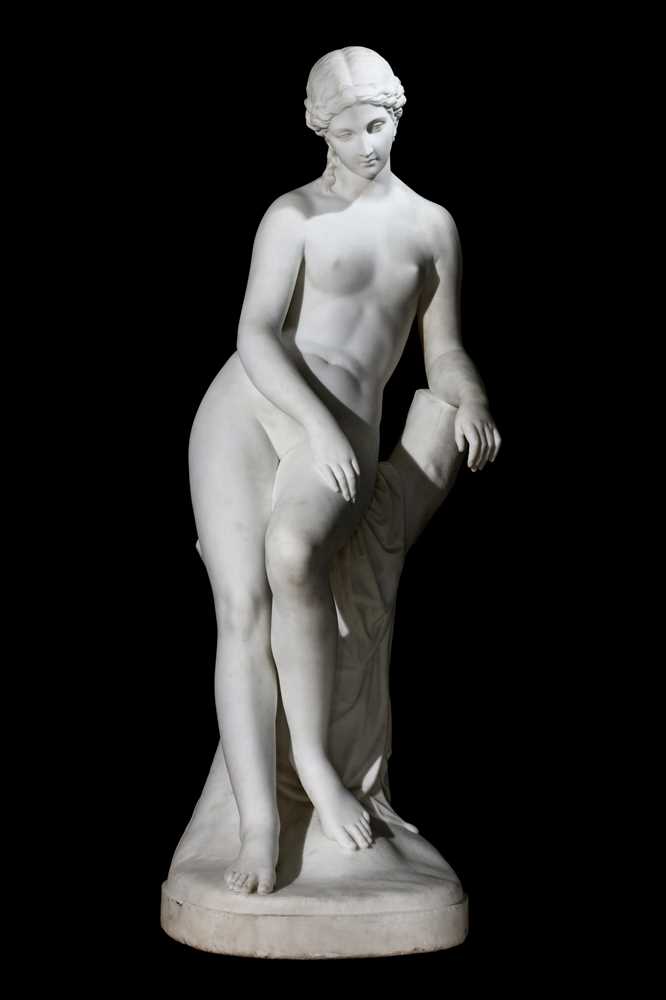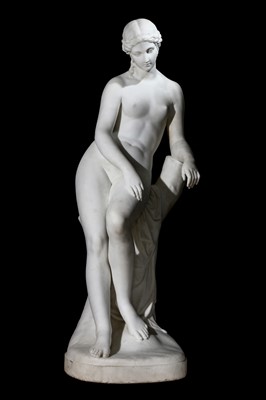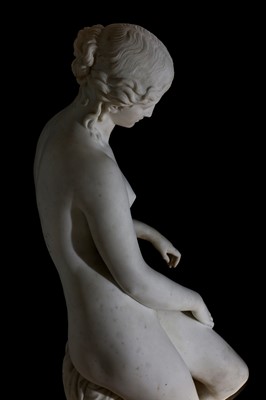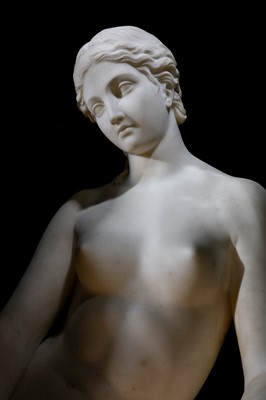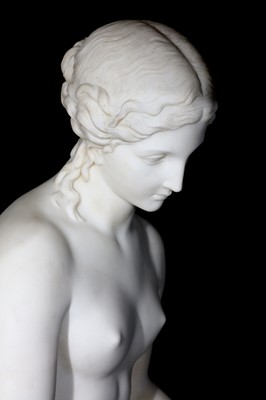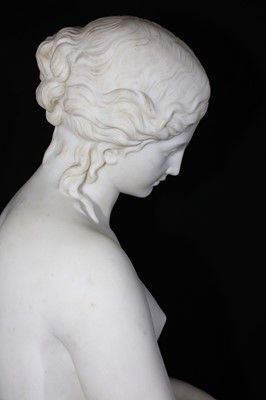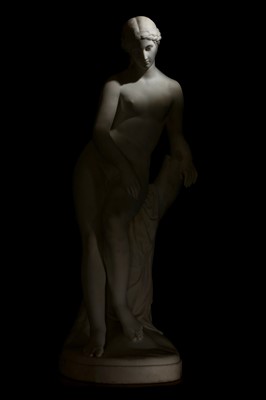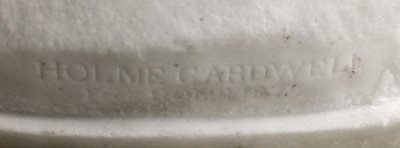21st Mar, 2018 10:00
European Works of Art & Clocks
HOLME-CARDWELL (BRITISH, 1813-1895): A LARGE MARBLE FIGURE OF DIANA ABOUT TO BATHE the nude figure of Diana resting against a draped tree stump, her hair arranged in a chignon, on an integral naturalistic base signed to the side 'HOLME-CARDWELL Fect.Rome 1879', 128cm high PROVENANCE: In the private collection of a gentleman for at least a generation. THIS LOT WILL BE ON DISPLAY AT OUR SOUTH KENSINGTON GALLERY UNTIL 14TH MARCH AND AT OUR CHISWICK SALEROOM FROM 16TH - 21ST MARCH. The form of this beautiful Neo-Classical sculpture is derived from a monumental marble Diana that Holme-Cardwell carved in Rome in 1862 and was shown at the London International Exhibition of that year. The monumental Diana recently came to auction at Sotheby's, London, 13 December 2017, lot 41 and realised £357,000. Holme-Cardwell also exhibited two other sculptures in the International Exhibition of that year, 'Pan and Cupid' and 'Sabrina', and the fact that these are both now in public institutions, (Pan and Cupid was given to the Victoria and Albert Museum in 1871, and Sabrina is now in the Hove museum, Sussex) is surely testament to the high esteem shown to the sculptor's works both at the time and in the present day. The exquisite modelling of Diana's nude physique and the idealised beauty of her facial features are combined in a marble figure that embodies both the ideals of the neo-classical style and the skill of the talented sculptor who carved her realistic figure from a block of marble. When the monumental Diana was exhibited in 1862 she was titled 'Diana about to Bathe', a title which provides a narrative for the elegant nude figure which in this example, lacks all attributes; for she has undressed and has removed her shoes and bow and quiver of arrows in order to bathe. The Handbook to the exhibition compared the Diana to the famous neo-classical sculptures of Bertel Thorvaldsen and Antonio Canova, further evidence of the high regard this sculptor enjoyed both during his lifetime and beyond, and placing him firmly among the masters of his generation. The present marble was probably produced for a specific commission by a patron who had seen the monumental Diana and wanted his own version. Related Literature: International Exhibition 1862, Official Catalogue, p. 141, Trusscot, son and Simmons, London, (National Art Library) R. Gunnis, Dictionary of British Sculptors 1660-1851, The Abbey Library, London, p 78. D. Bilbey & M. Trusted, British Sculpture 1470-2000 A Concise Catalogue of the Collection of the Victoria and Albert Museum, V&A Publications, London, 2002, page 232. Mapping the Practise and Profession of Sculpture in Britain and Ireland 1851-1951, University of Glasgow History of Art and HATII online database 2011
Estimated at £60,000 - £80,000
Do you have an item similar to the item above? If so please click the link below to submit a free online valuation request through our website.
